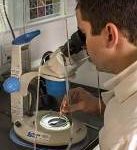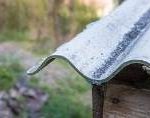Asbestos myth buster
Asbestos is a naturally occurring fibrous mineral which was used in the construction industry from the early 1900’s until the late 1990’s. It was often used for insulation and fire-proofing, and frequently found in products such as ceiling tiles, pipe insulation, sprayed coatings, garage roofs, rainwater goods, gaskets, ropes and boilers, to name but a few.
Asbestos was used in thousands of different products and although no longer used, its legacy remains in thousands of premises across the UK and in many countries worldwide.
There are many myths circulating about asbestos, the majority untrue and therefore unhelpful and potentially unsafe. Here we feature some of these, separating the myths from the facts, to help you stay safe around asbestos.
MYTH: Asbestos is easy to recognise, you can tell if there’s asbestos just by looking at it.
FACT: Asbestos was used in thousands of consumer products, building and engineering materials between the early 1900’s and the late 1990’s. Laboratory testing is the only way to confirm if asbestos is present; it cannot be detected with the naked eye.
MYTH: Asbestos is harmless in small amounts
FACT: There is no known safe level of asbestos exposure. The risk of developing an asbestos disease will increase with each exposure, however, even inhaling a few fibres can be dangerous.
MYTH: It’s only Blue and Brown Asbestos that is dangerous, White Asbestos is safe.
FACT: Although Blue and Brown Asbestos are recognised as the more dangerous asbestos types, exposure to White Asbestos is also harmful to health. Remember, exposure to any asbestos is dangerous.
MYTH: You feel ill after asbestos exposure
FACT: There are no symptoms or signs of ill health after asbestos exposure. The body will try to expel the fibres which become lodged in the lungs and it is this that causes damage to the lungs. An asbestos-related disease can go undetected for many years with the period between exposure and detection/symptoms being as long as 40 years.
MYTH: Only older people die from asbestos-related diseases
FACT: Each week approximately 20 tradesmen die from asbestos-related diseases. The long latency period between exposure and diagnosis generally means the majority of people diagnosed are older, however there have been cases of people dying in their early 40’s after being exposed to asbestos whilst at school.
MYTH: Most asbestos has been removed from buildings.
FACT: Taking schools as an example, over 75% of all UK schools contain asbestos. Asbestos was used prolifically in construction for many years and so getting rid of it will take decades. It is present in the fabric of the building and is often not discovered until a survey is conducted. It’s important to ask about asbestos before any work is conducted in a building, have an awareness of it and be prepared to stop works in an emergency situation.
MYTH: Asbestos was banned years ago so I don’t need to worry
FACT: Asbestos is the biggest occupational killer in the UK, beating falls, electrocution, workers being struck by objects, excavation failure and transportation accidents. The last prohibition date in the UK was 1999, although asbestos has been identified in properties built after 1999.
MYTH: All I have to do is get a survey done.
FACT: A Management Survey will identify and assess what asbestos is present and once identified it’s important to produce a Management Plan which details how you are going to safely manage it.
A management Plan will include areas such as:

- Contractor control
- Re-inspection frequency
- Emergency procedures
- Roles and responsibilities
- Training of staff
- Prioritisation for remedial work
- Action plan and contingency arrangements if the main contact person for asbestos risk management is not available
It is important to note that as a minimum, the management plan, including records and drawings, should be reviewed every 12 months. It should also be reviewed if there is reason to believe that circumstances have changed (e.g. there is a change of use of building, work being undertaken, Asbestos Containing Materials removed or repaired etc.).